本文由 Department of ARCHITECTURE Co., Ltd. 授权mooool发表,欢迎转发,禁止以mooool编辑版本转载。
Thanks Department of ARCHITECTURE Co., Ltd. for authorizing the publication of the project on mooool, Text description provided by Department of ARCHITECTURE Co., Ltd.
Department of ARCHITECTURE Co., Ltd.:Little Shelter位于泰国清迈,清迈是一座以古老城市景观以及木结构和瓦片坡屋顶乡村建筑结构为特色的城市。该酒店屋顶汲取当地传统的髋部屋顶形式,以此向当地建筑致敬,并通过不对称的形式与周围的树梢轮廓自然地融合在一起,对酒店的屋顶形式进行了重新诠释。
Department of ARCHITECTURE Co., Ltd.: Little Shelter is located in Chiang Mai where its old cityscape and vernacular architecture are characterized by wood structure with shingle pitched roof. The hotel roof form inspired by traditional hip roofs as homage to the local architecture has a little reinterpretation with an asymmetrical form blending naturally with the surrounding tree top silhouette.
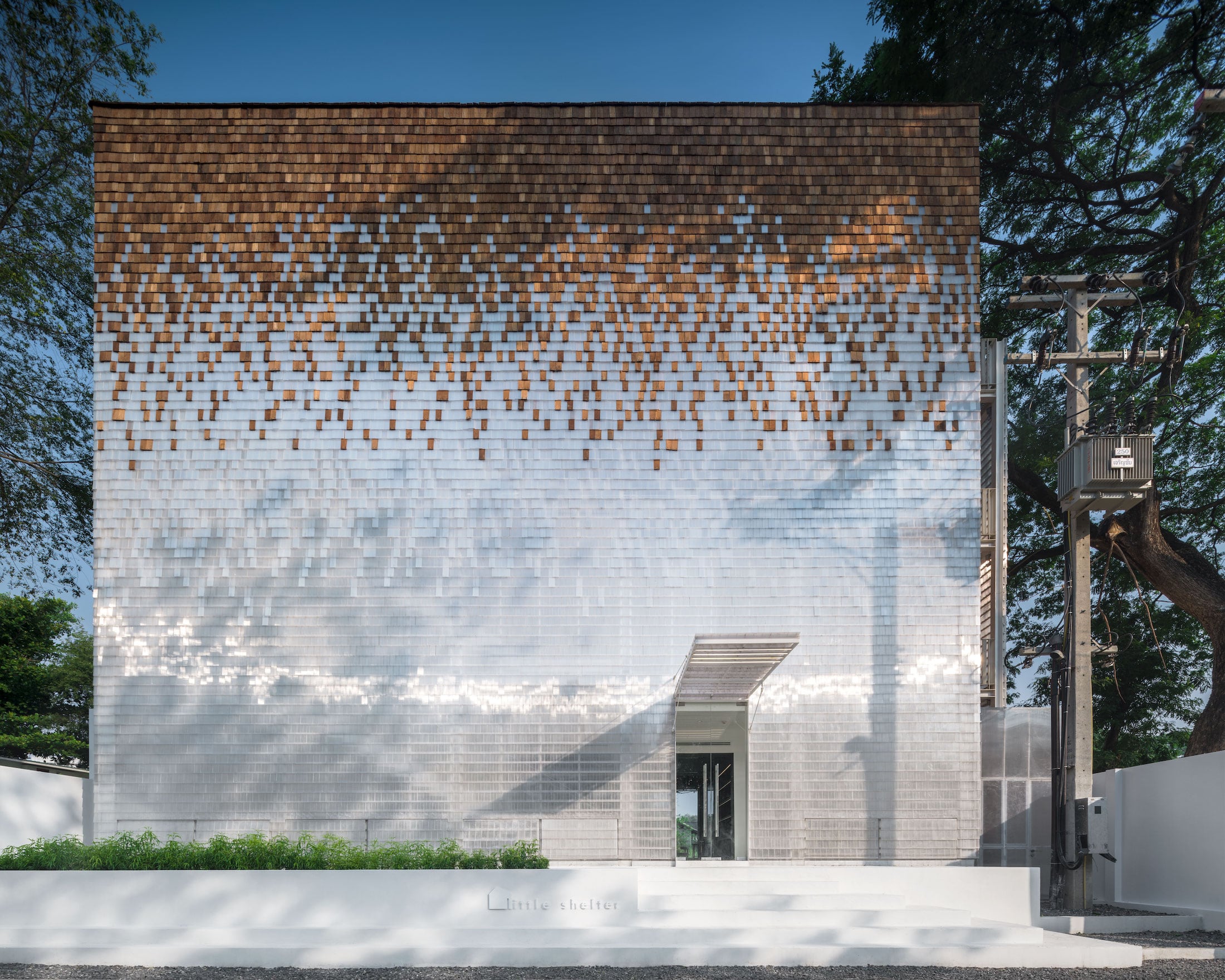
屋顶西侧部分的屋顶平台,可供客人在日落时欣赏河景全景。
The west side of the roof is partially carved out to become a roof deck for guests to enjoy the panoramic river view at sunset.
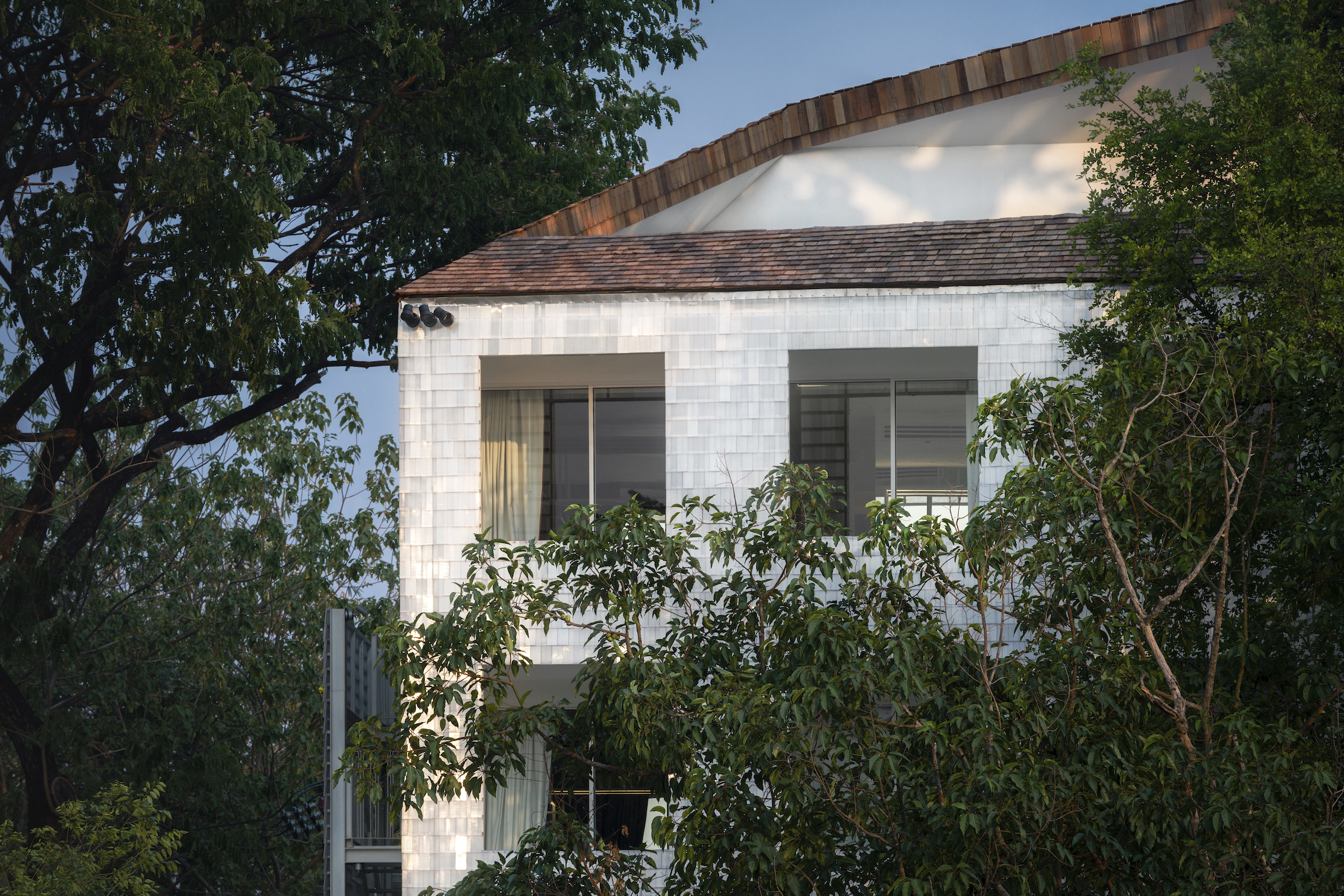
该设计通过使用主要传统材料——木瓦,延续当地建筑特色。这种材料最有趣的地方在于,其结构运用体系已经发展了数百年。一片片小小的木瓦像鱼鳞一样排列在建筑立面,为建筑提供防水作用。该设计同样也探索了将新材料融入传统材料系统的可能性,创造出这样一个深植于传统的新当代建筑立面。
The design continues the local architectural character through the use of the predominant traditional material – the wood shingles. The most interesting aspect of the material is in its system that has been well developed for hundreds of years. Small units of wood shingles are laid out like fish scales to become a watertight architectural plane. The design has explored a possibility to fuse new materials into the system to create a contemporary architectural surface yet deeply rooted in tradition.

▼像鱼鳞一样排列 Laid out like fish scales
木瓦主要用于建筑屋顶和侧壁,建筑立面上切割成与木瓦相同大小的聚碳酸酯板,则构成了整个半透明的建筑立面。入口立面的上部主要由实木瓦组成,与下部的聚碳酸酯瓦自然融合。与传统木瓦系统同时出现的不间断半透明表面主要归功于一个特殊的细节设计,即其中所使用的半透明螺柱和特殊的透明螺丝。当光线接触到建筑表面的不同透明程度的不同材料颗粒时,建筑立面就会在阳光下变得闪闪发光。随着天空光线条件的变化,穿过立面的光线,也在不同时间营造出不同的室内氛围。夜晚,有了室内的灯光,建筑就如一盏在河堤上发着光的灯笼。这个结构这样看起来倒不像一个建筑,反而更像是一件工艺品。
The wood shingles are used on the roof and side walls. On the river facade, polycarbonate sheets are cut into the same size as wood shingles and constructed to become the architectural translucent facade. On the entrance façade, the upper portion is composed of solid wood shingles and they trickle down to mixed with polycarbonate shingles on the lower part. Although working with the traditional shingle system, the uninterrupted translucency surface is achieved by a special detail design using translucent studs and special transparent screws. The facade is glittering in the sun as the light touches different material grains, from the solid wood shingles to the different translucency levels of the polycarbonate shingles. The light passes through the facade and creates varying interior atmosphere at different time with the changing light condition of the sky. At night with the light from the inside, the building becomes a lantern glowing on the riverbank. The structure seems less of a building but becomes more like a piece of craftwork.
▼在室内灯光下的立面 At night with the light from the inside

公共区域与外部的简约相得益彰,给人一种置身于艺术画廊般的感觉,场地上特定装置的设计灵感来自著名的Boh-Srang雨伞,它创造出的精致而富有戏剧性的轮廓,是对当地手工艺的一种当代诠释。
The public area interior complements the exterior simplicity, gives a gallery-like feeling that accommodates the site-specific installations inspired by the famous Boh–Srang umbrella, and creates delicate and dramatic silhouettes expressing contemporary interpretation of the local handicraft.
▼公共区域内外部相辅相成 The public area interior complements the exterior simplicity
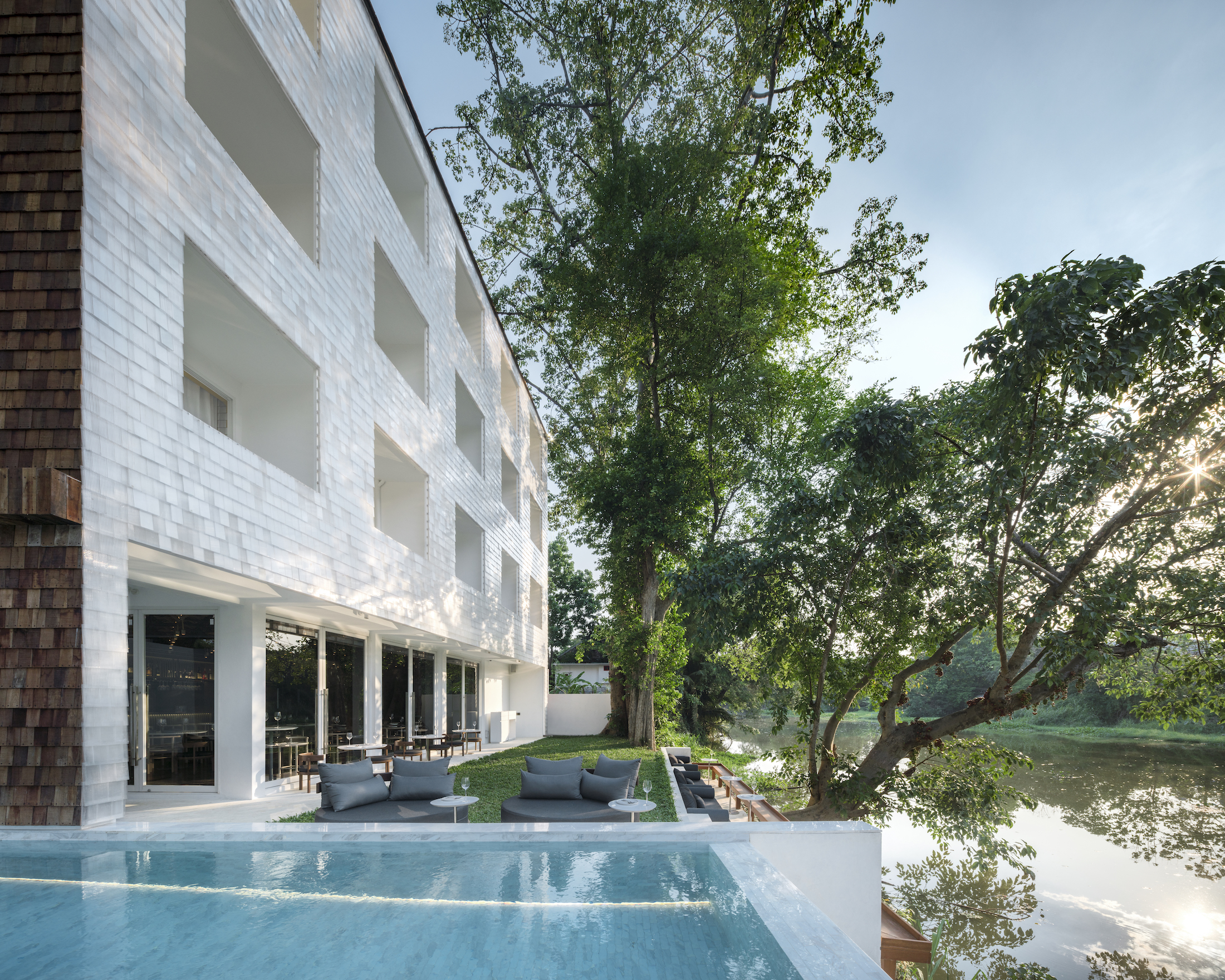

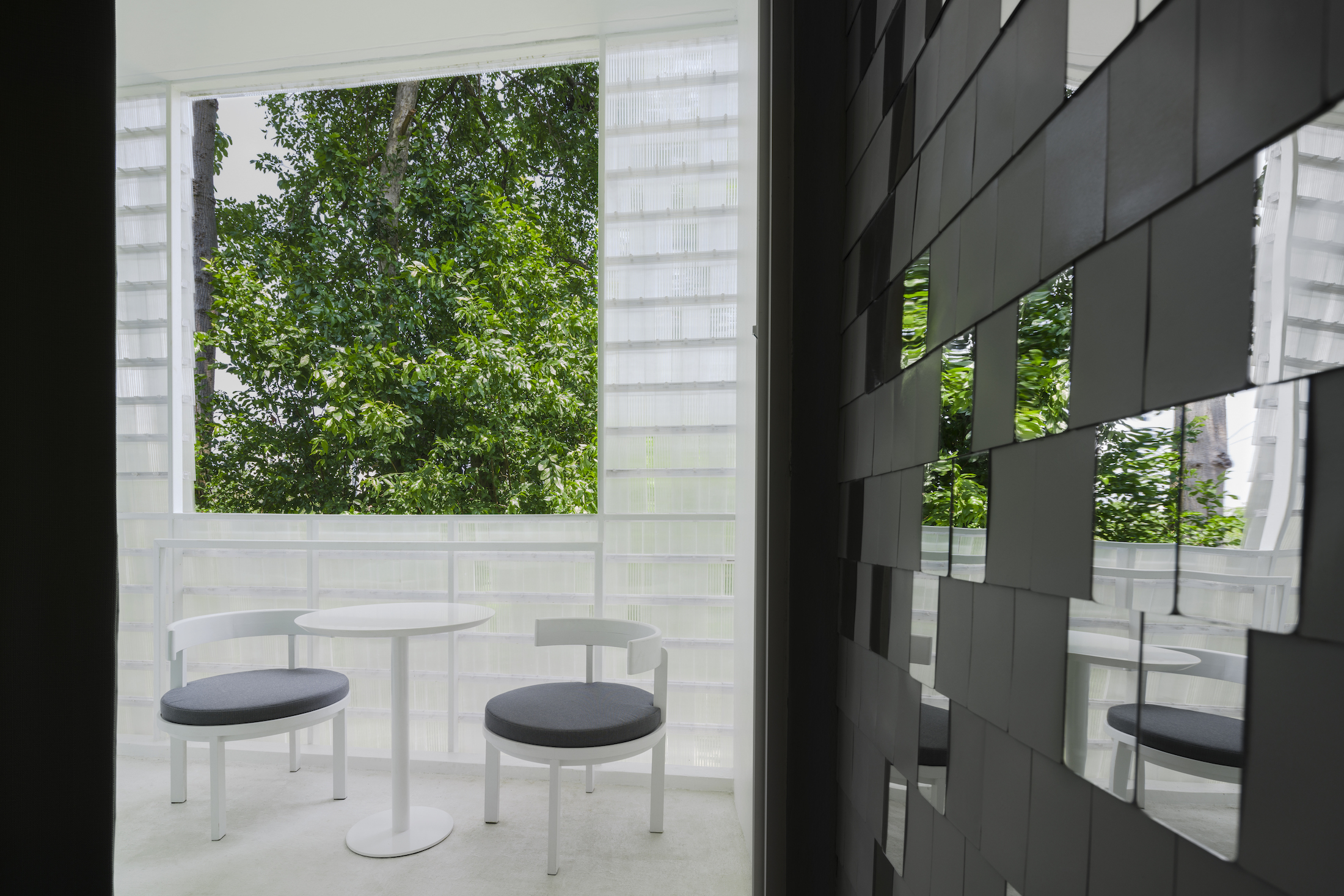

▼公共区域场地装置 The site-specific installations
▼餐厅天花板装置

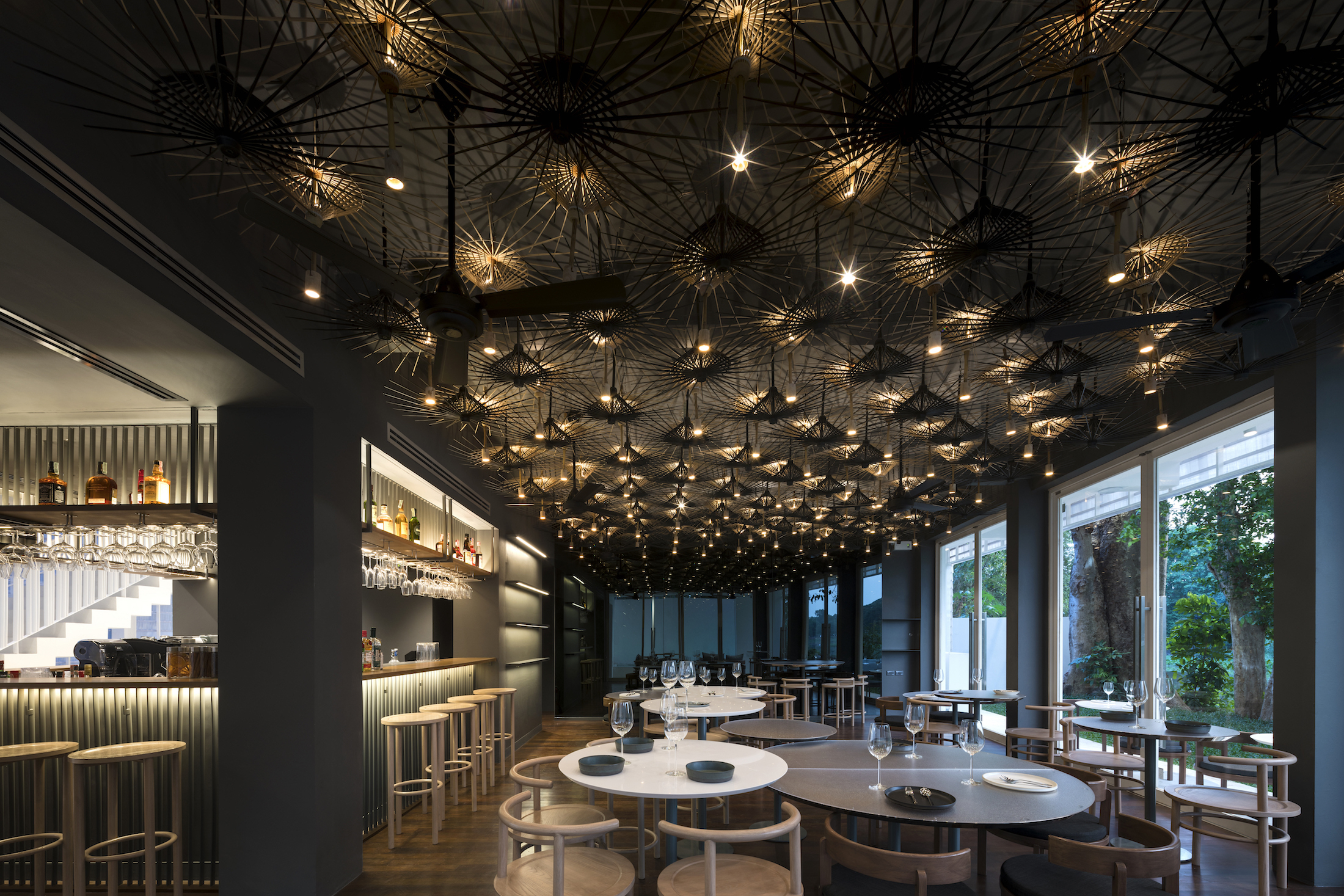
毫不夸张地说,客房内部就是一个以全新角度重新发现清迈的空间。整个天花板上都是清迈的重要景点和活动的图画,如古城墙、浮灯笼节、松树林、柏树峡谷等。这些图无限延伸到两面长墙上,墙上贴着的小镜子和瓦片,给人一种超现实的无界感。14间客房的图像各不相同,每一个都散发出不同的感觉:宁静、俏皮、文雅、神秘等,可满足各种客人的喜好。
The guest room interior is a place to rediscover Chiang Mai in a new angle, literally. Images of important places and events of Chiang Mai such as its ancient city wall, floating lantern festival, pine forest, Pah-Chor canyon, etc., are placed on the entire ceiling. The images infinitely reflected onto the two long walls cladded with small mirror shingles, giving a surreal borderless sensation. The images are all different for each of the fourteen guest rooms. Each emanates different and unique feeling: tranquil, playful, cultured, mysterious, etc. suitable for any preferences of the guests.
▼不同的客房内部 The images are all different for each of the fourteen guest rooms.
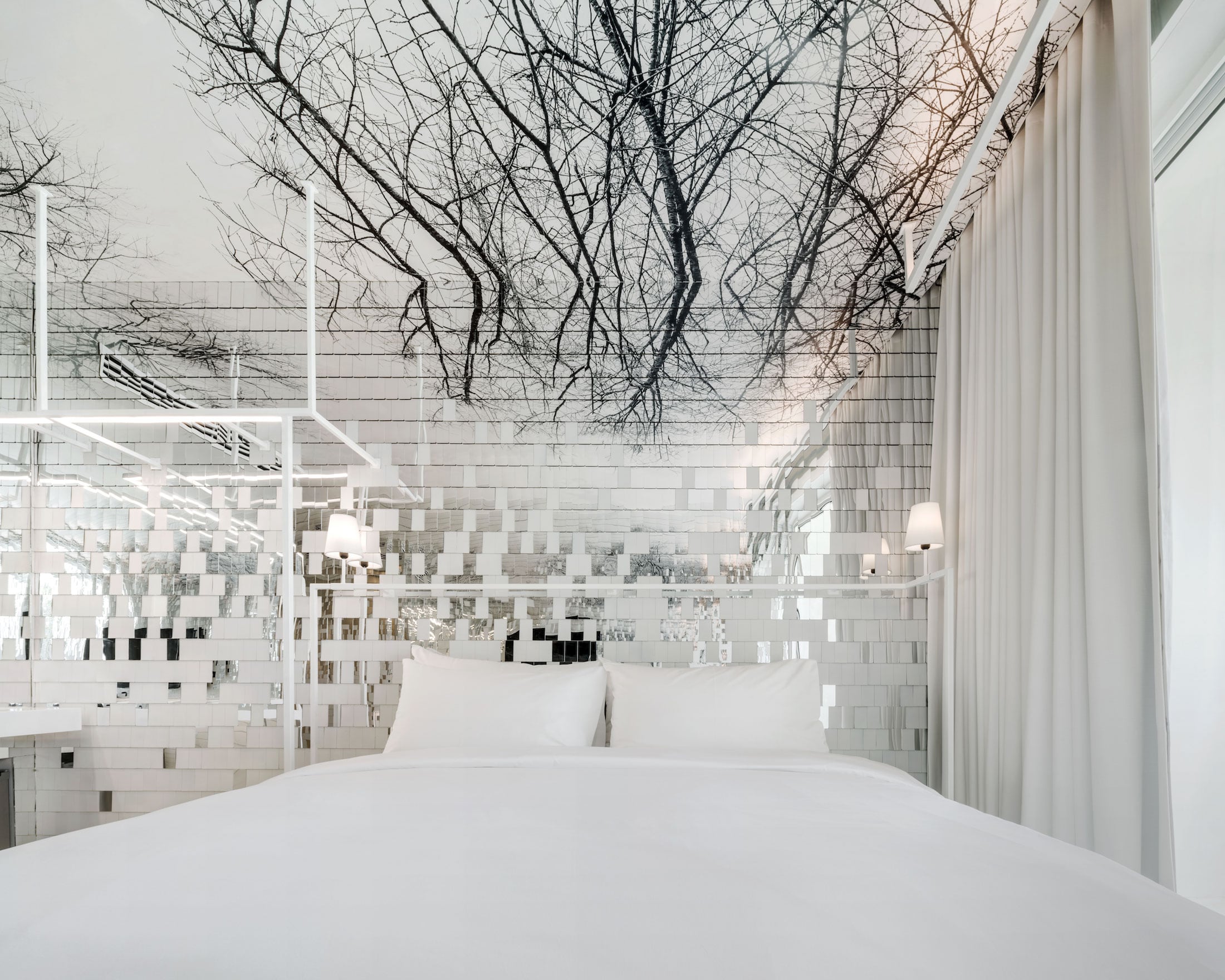

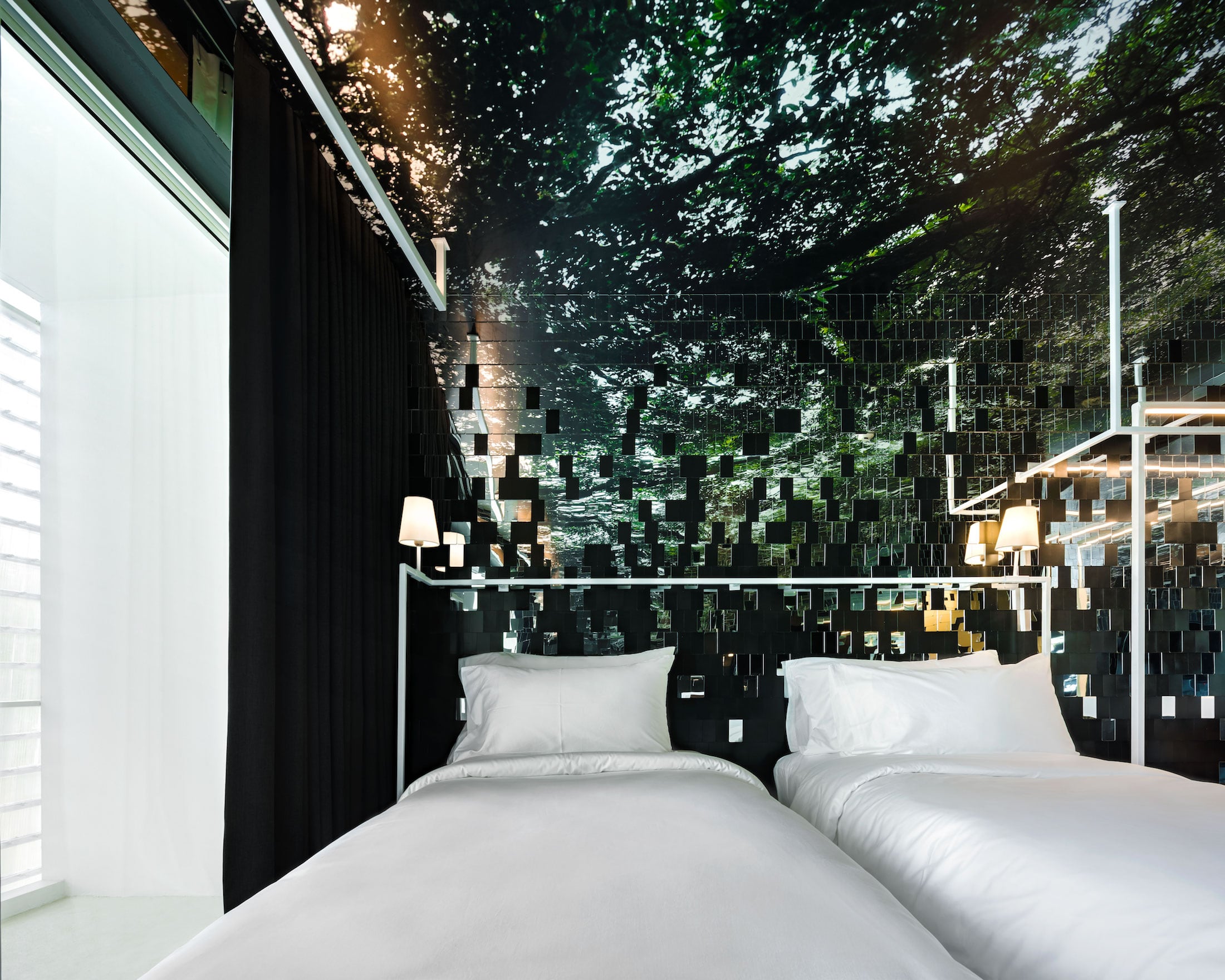
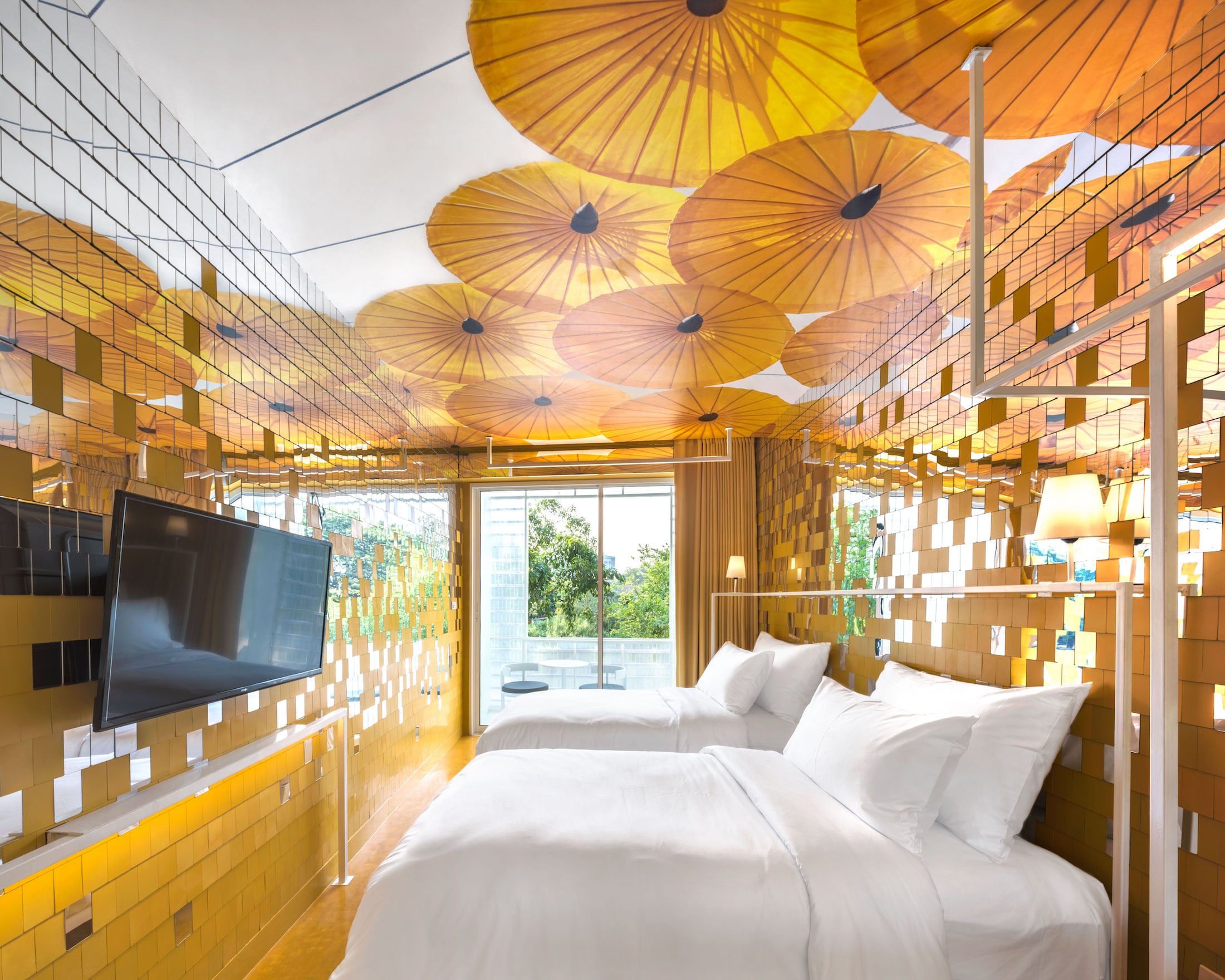
Little Shelter不仅仅是一个供人们睡觉的地方,它同时也向游客们介绍了清迈的过去、现在,或许还有未来。
Little Shelter is not only a place to sleep. It is an introduction of the past, the present, and probably the future of Chiang Mai to its visitors.
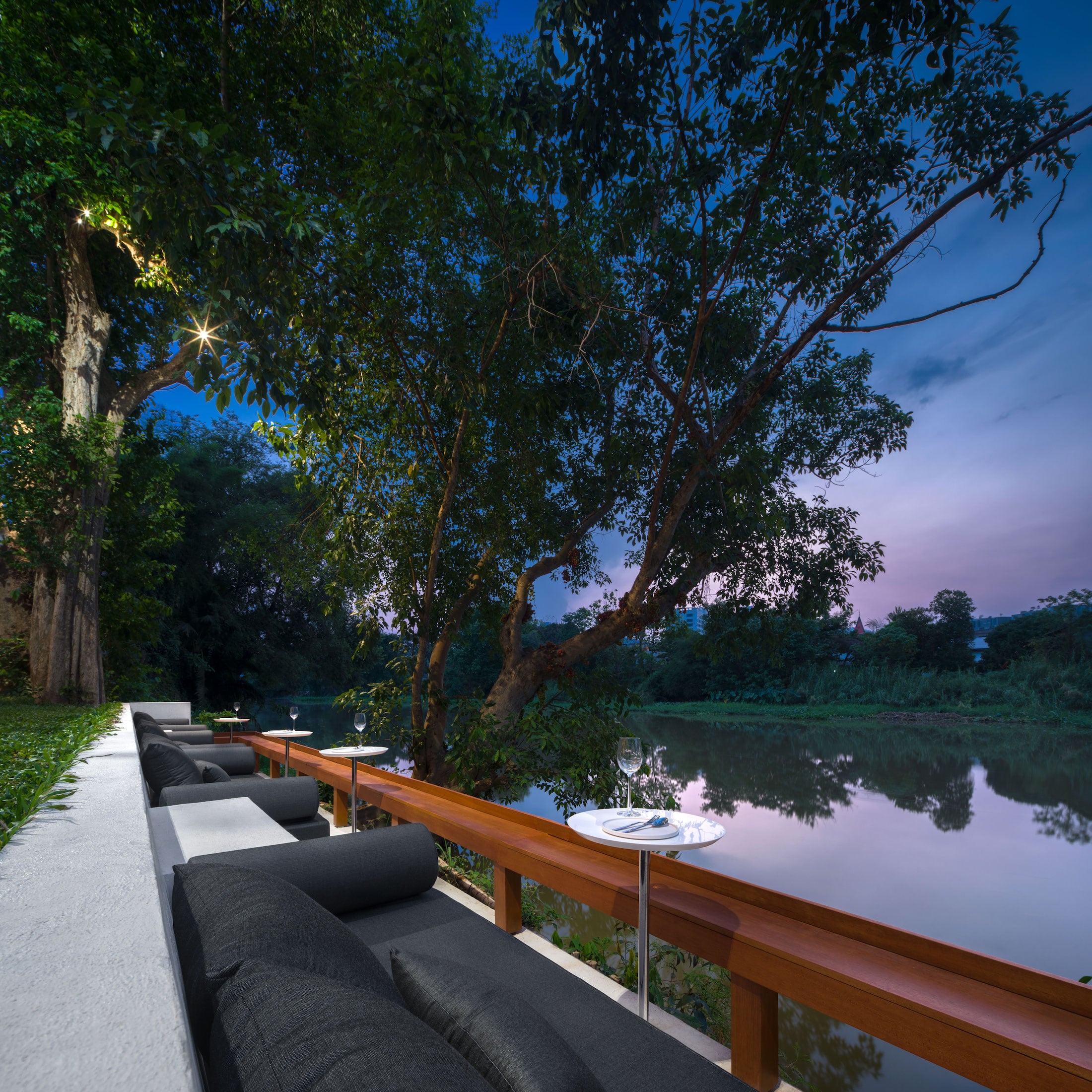
▼建筑各层平面图 Floor Plan
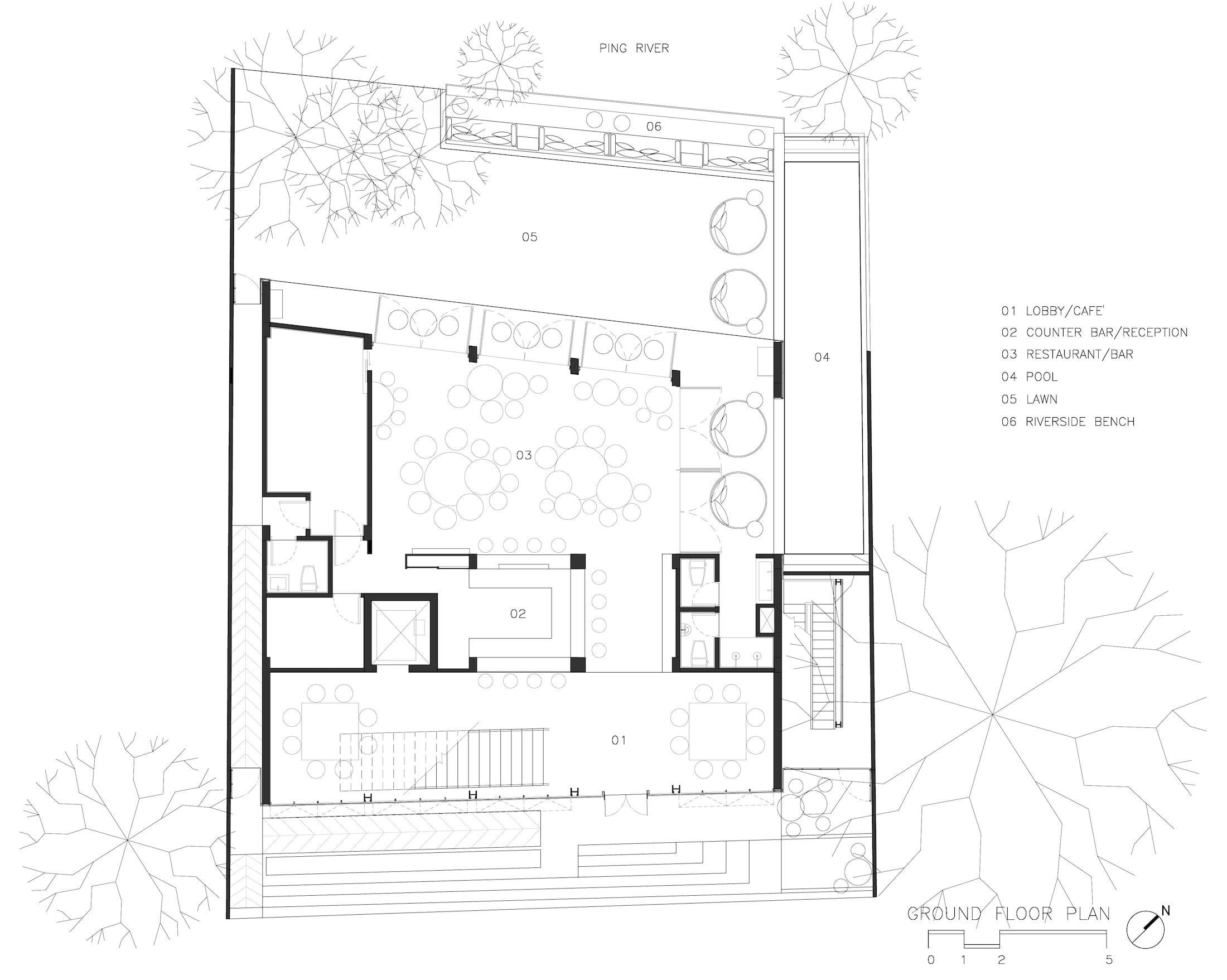
▼建筑立面 Elevation
项目名称:Little Shelter Hotel
客户:Little Shelter Co., Ltd。
地点:清迈清迈路208/ 25号,淡汶寺,清迈梅芳,昌寺,50000
建筑、室内、景观设计:Department of ARCHITECTURE Co., Ltd.
首席建筑师:Amata Luphaiboon, Twitee Vajrabhaya
项目建筑师:Adhithep Leewananthawet
建筑设计团队:Pitchaya Poonsin, Tanadeth Mahapolsirikun, Supavit Junsompitsiri
室内设计团队:Yada Pianpanit, Apisara Lertrattanakit
灯光设计师:Nopporn Sakulwigitsinthu设计的Accent Studio
结构工程师:NEXT工程设计有限公司
MEP工程师:NEXT工程设计有限公司
主要材料:木瓦、聚碳酸酯板、彩色混凝土
建筑面积:890平方米
设计周期:2017年5月- 2018年1月
建设工期:2017年12月- 2019年4月
摄影:W Workspace Company Limited
Project Name: Little Shelter Hotel
Client: Little Shelter Co., Ltd.
Location: 208/ 25 Chiang Mai-Lamphun Rd, Tambon Wat Ket, Amphoe Mueang Chiang Mai, Chang Wat Chiang Mai 50000
Architectural, Interior, and Landscape Design: Department of Architecture Co.
Principal Architect: Amata Luphaiboon, Twitee Vajrabhaya
Project Architect: Adhithep Leewananthawet
Architectural Design Team: Pitchaya Poonsin, Tanadeth Mahapolsirikun, Supavit Junsompitsiri
Interior Design Team: Yada Pianpanit, Apisara Lertrattanakit
Lighting Designer: Accent Studio By Nopporn Sakulwigitsinthu
Structural Engineer: NEXT Engineering Design Co., Ltd.
MEP Engineer: NEXT Engineering Design Co., Ltd.
Main Materials: Wood shingle, polycarbonate sheet, and colored-concrete
Building Area: 890 sq.m.
Design Period: May/2017 – January/2018
Construction Period: December/2017- April/2019
Photographs: W Workspace Company Limited
更多 Read more about: Department



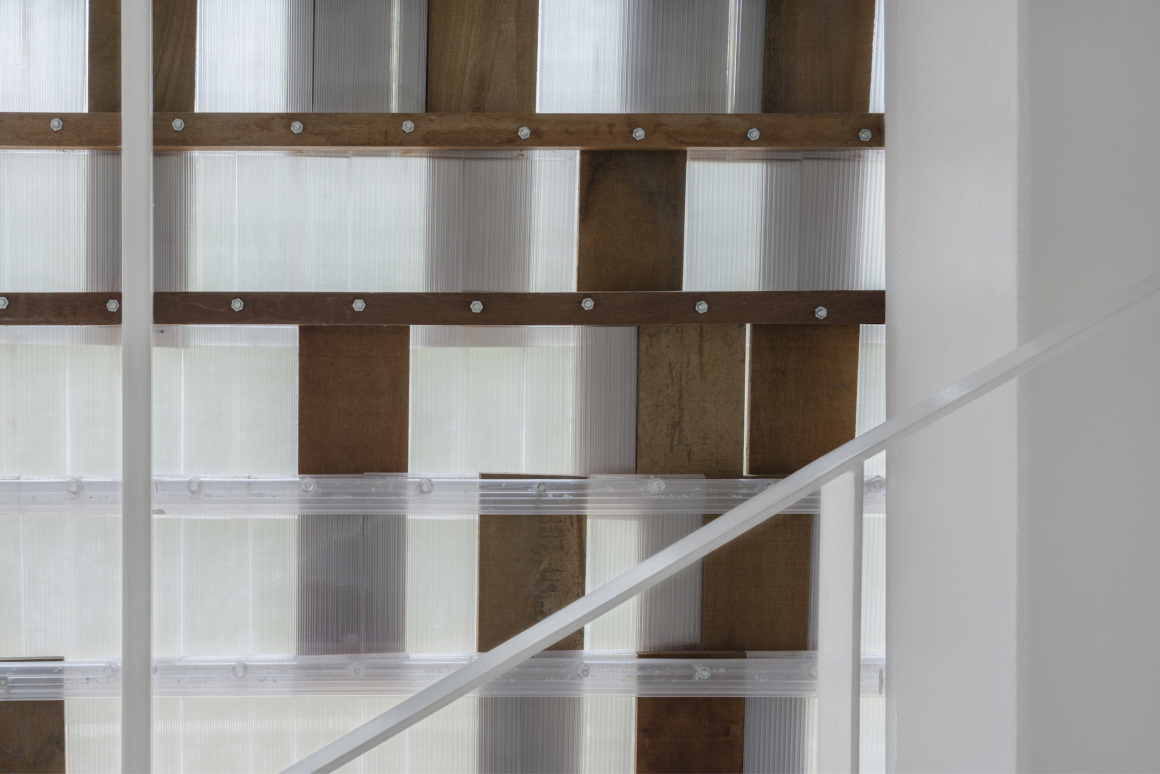

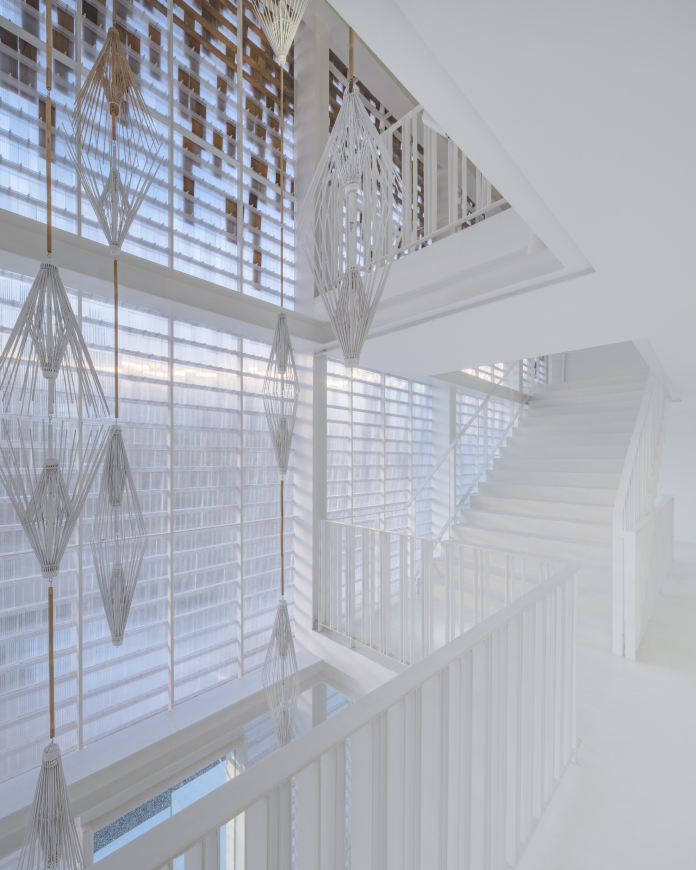
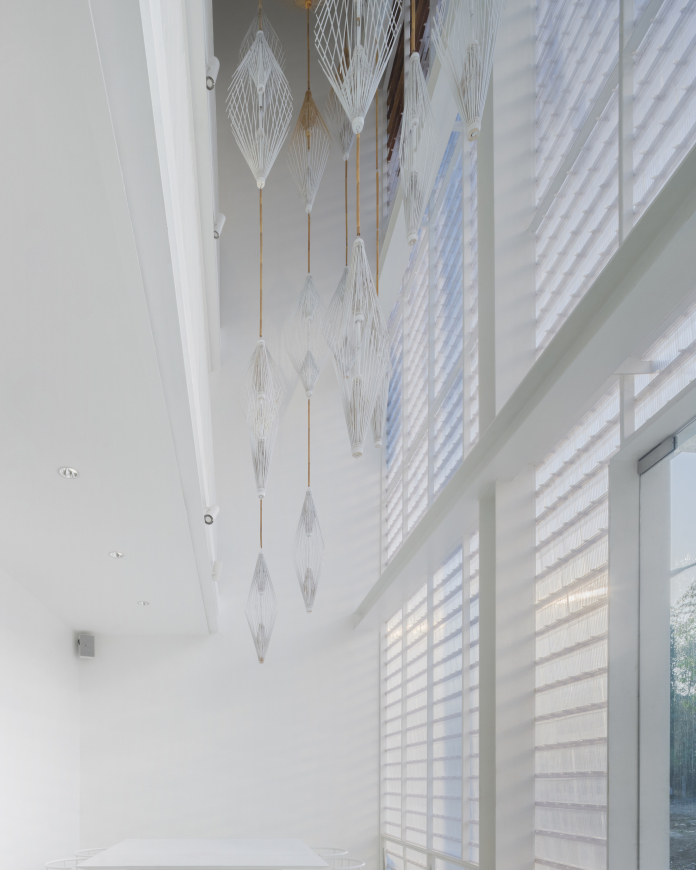

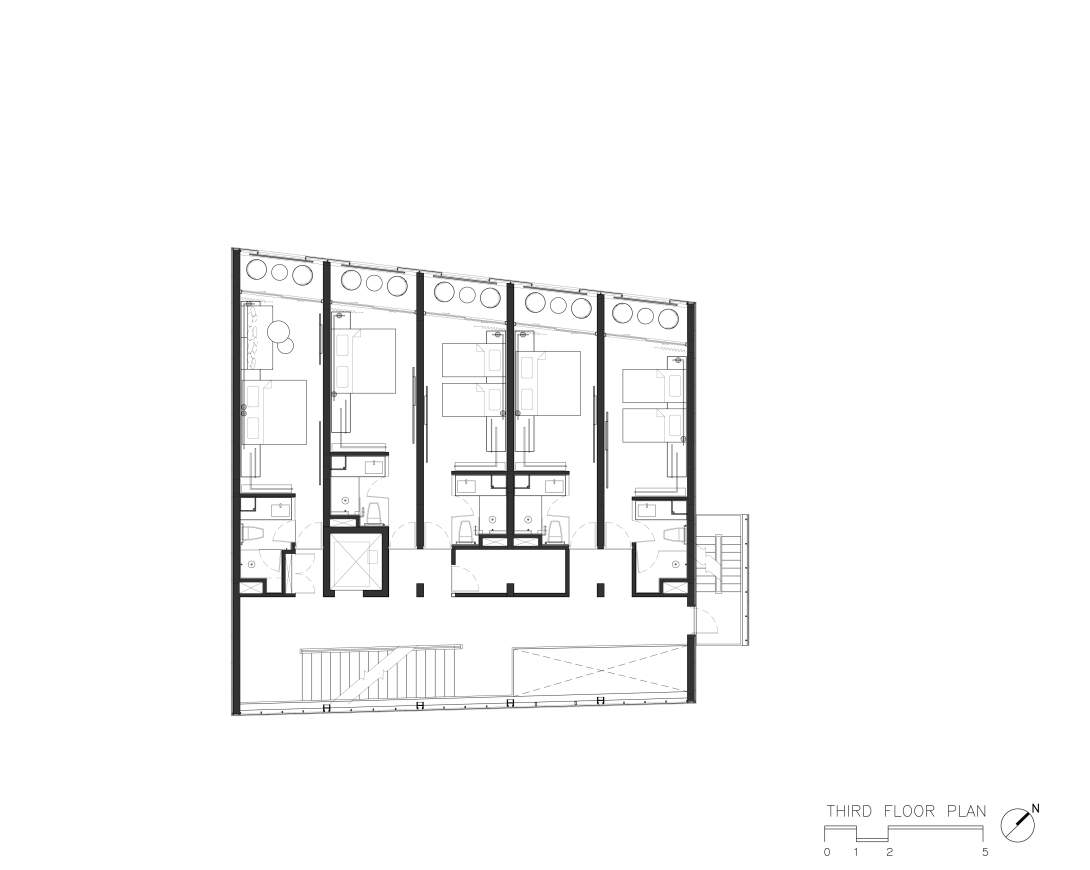
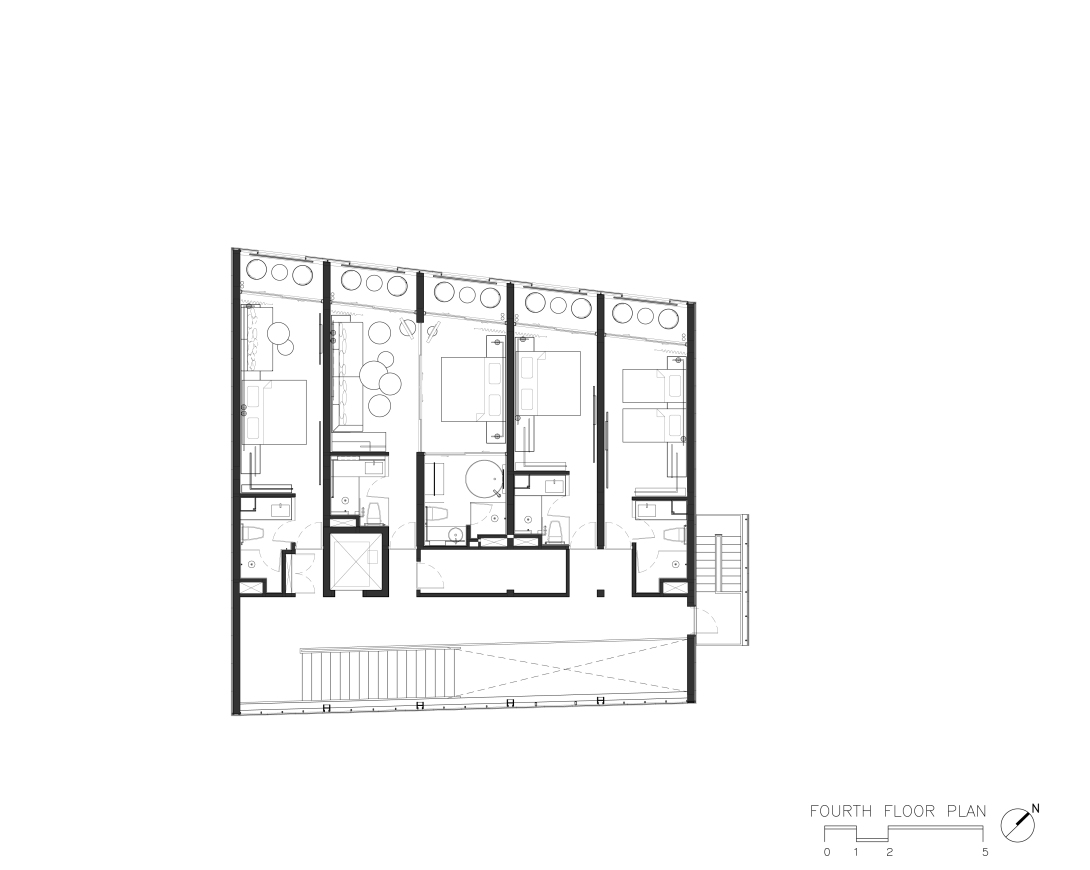
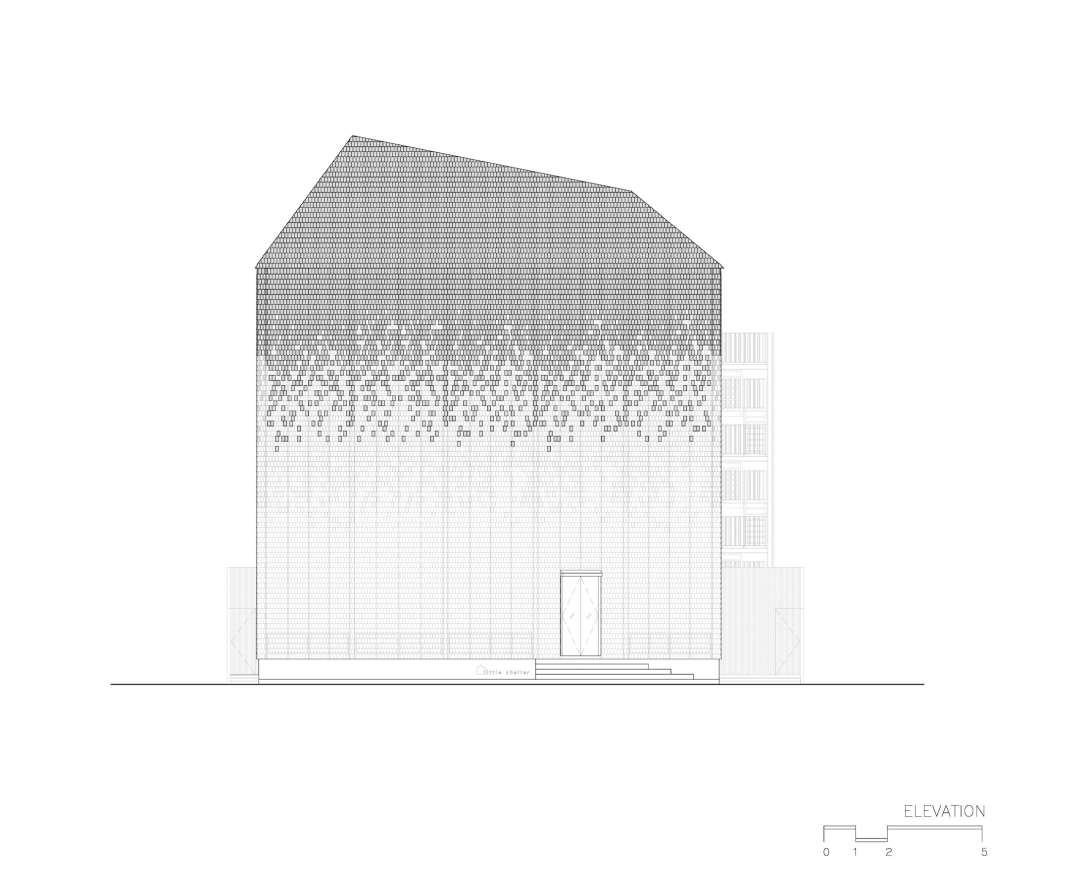
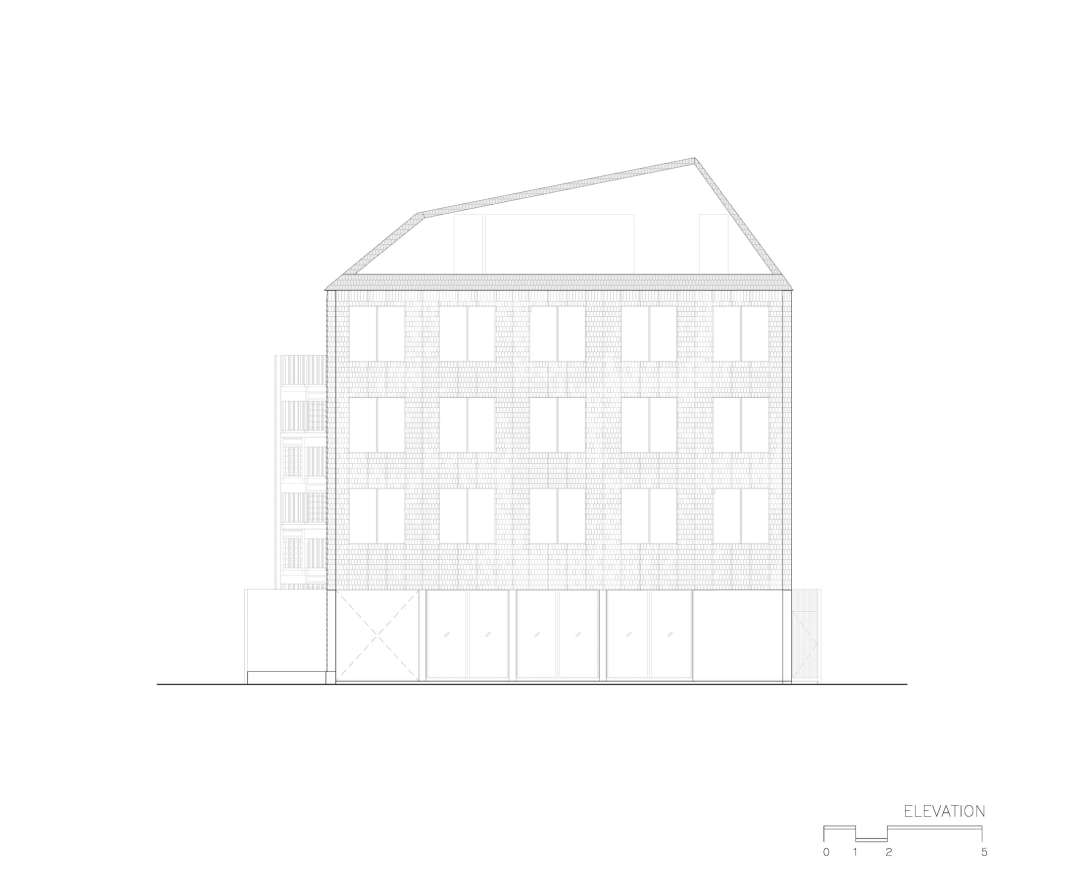


0 Comments